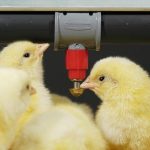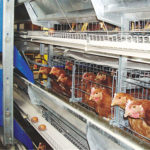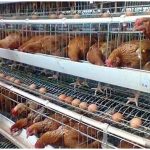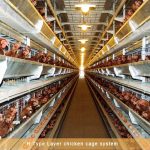The drinking time of laying hens and the amount of water they drink per day are also related to the egg production rate of laying hens. If the farmers have a good grasp of the daily water consumption of the laying hens, the egg production rate will drop, so drinking water is also very important. The author would like to talk about how to drink water for laying hens when usinglayer chicken cages.
Water has a great impact on the egg production rate of laying poultry. The supply of drinking water is very important, and the water supply is lacking, resulting in lower egg production rate. The demand for water in poultry is generally considered to be 1:2 for water. In practice, continuous water supply (free drinking water) is used, or intermittent water supply is sufficient to ensure complete water supply. The quality of the water has an important influence on the egg production rate. The high nitrite content in the water causes the laying hens to vent, the egg production rate and hatching rate are reduced; the pathogenic microorganisms in the water are the main source of infection for egg-producing diseases, resulting in lower egg production. Therefore, it is necessary to supply sufficient, clean and hygienic drinking water for laying eggs.
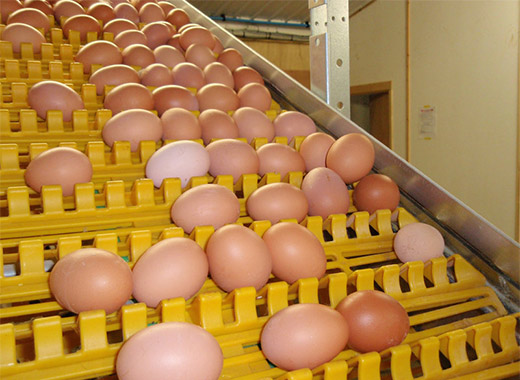
Under normal circumstances, the daily water requirement of each chicken is about 110 ml in winter, about 280 ml in summer, and about 200 ml in spring and autumn. When the laying rate of laying hens increases, the water demand also increases. Because the chickens at this time are strong in egg production and the metabolism is strengthened, not only does the egg need to form water, but as the food intake of the chicken increases, the water requirement also increases. Therefore, special attention should be paid to water supply during the peak period of chicken laying, otherwise it will directly affect its health and egg production.
Under normal circumstances, the laying hen will have 3 drinking water peaks every day, which is 8:00 am, 12 noon, and 6:00 pm every day. Most of the chicken’s drinking time is in the light time. At around 8 in the morning, the chicken began to receive light (daylight or light); around 12 noon, it was the peak time for laying eggs. After the hen had finished producing eggs, the body consumed more water and felt very thirsty to drink water. Around 6 o’clock, the light time is coming to an end, ready to enter the evening to start the rest, the chicken should drink enough water to facilitate the spare time in the evening. If laying hens do not drink water or drink less water during the peak period of these three water needs, the laying and health of the chicken will be quickly manifested.
The above is the time and amount of water to be used when using thelayer rearing equipment, and the farmers should pay attention to their daily observations.


